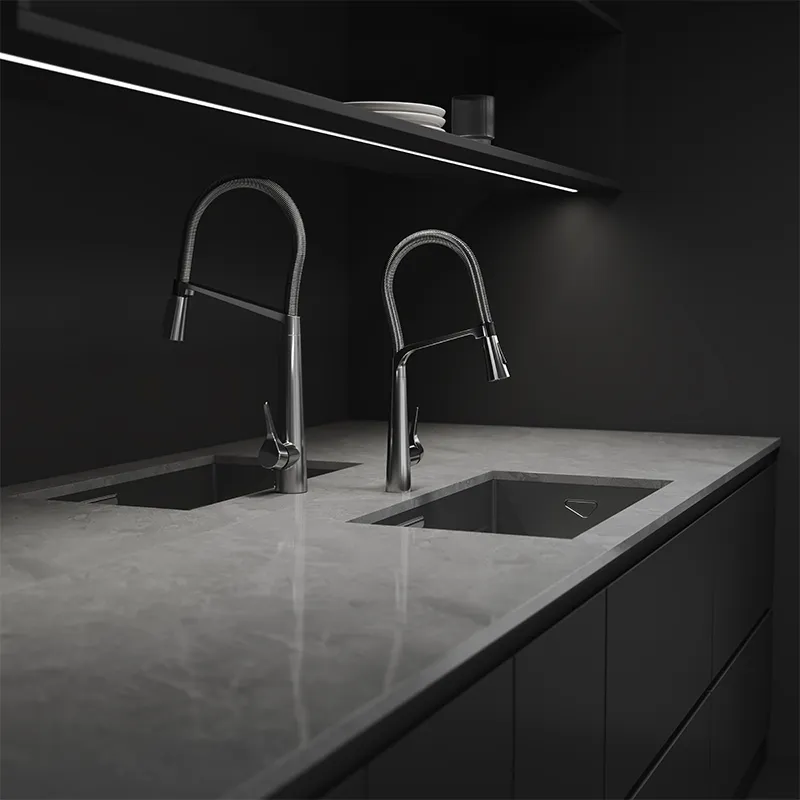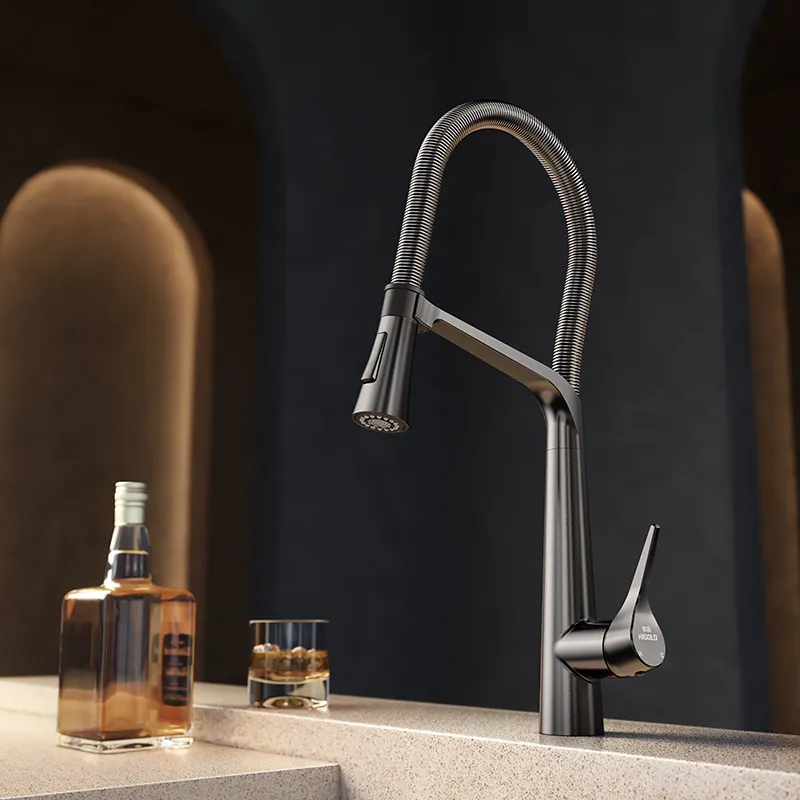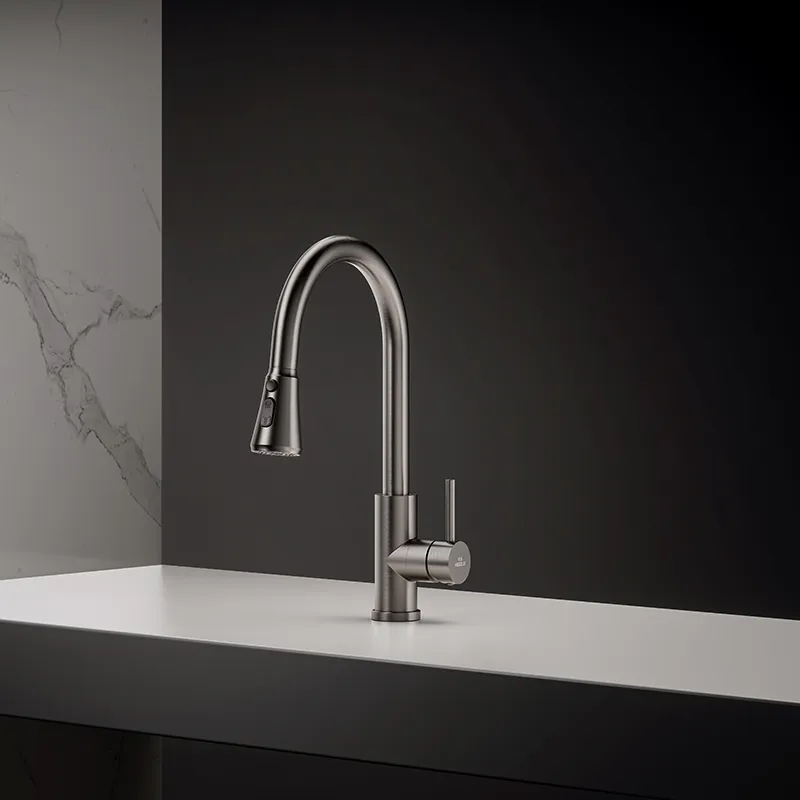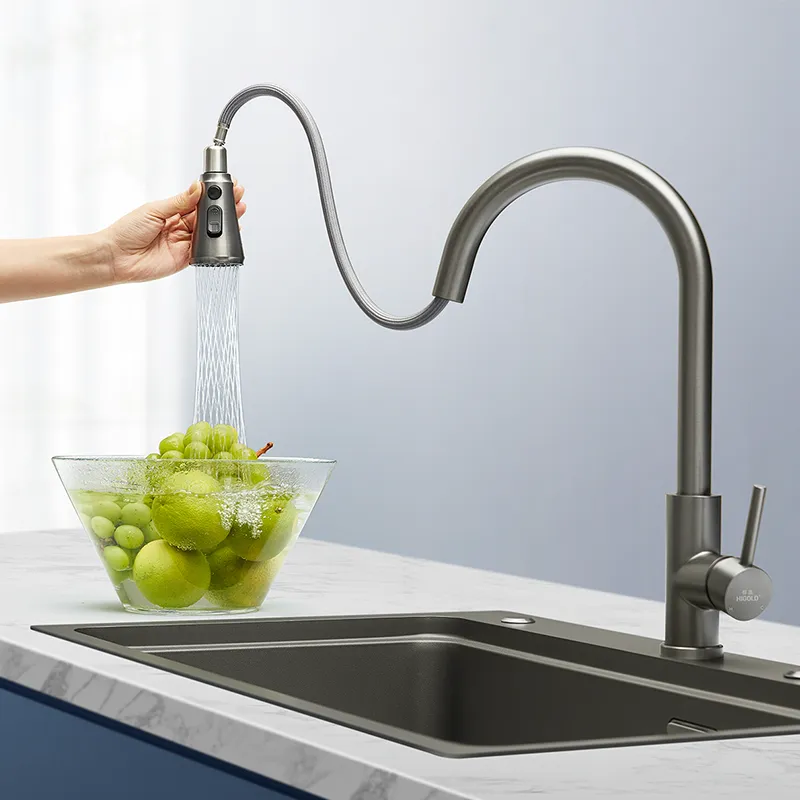The kitchen sink faucet is one of the essential facilities in modern family kitchens. It is not only an essential tool for cleaning and washing in daily life, but also a part of kitchen design. The installation of kitchen faucets is not only about functionality, but also about beauty and ease of use. Many people may not have noticed a problem when buying kitchen sinks and faucets, that is, where holes need to be drilled when installing the faucet.
In fact, the installation of kitchen sink faucets is a detailed project involving precise positioning and strict operation, and different types of sinks and faucets have different requirements for drilling holes.
This article will discuss in detail the location of holes that need to be drilled during the installation of kitchen sink faucets, the drilling standards, and how to correctly select and handle these holes to ensure the smooth installation and use of the faucet.

Hole position issues in kitchen faucet installation
The installation of kitchen sink faucets is a very important part of decoration. It not only affects the convenience of kitchen use, but also affects the beauty of the kitchen and the safety of water pipe connections. When installing sink faucets, the location of the drilling holes is very important. Typically, a sink faucet requires one hole to secure its base, and other holes to install other accessories, such as a spray gun on the sink, hot and cold water pipe joints, etc. The location and number of holes to be drilled need to be determined based on the design of the kitchen sink and the function of the faucet.
1. Basic hole requirements
For most standard kitchen sinks, a hole is usually drilled on the sink surface for the main sink faucet. This hole is usually located at the back or directly above the sink, and there are usually one or two holes for the faucet to be installed. If your kitchen sink design is more complex, you may need multiple holes to install additional functions, such as kitchen spray guns, temperature control valves and other accessories.
2. Faucet location and direction
The hole position of the kitchen sink faucet needs to be determined based on the size and shape of the sink and the design of the faucet itself. The hole position on the kitchen sink should ensure that the faucet can be easily used during operation. Generally speaking, the faucet should be installed in the center of the kitchen sink or slightly to the left or right. This ensures smooth water flow and does not cause the faucet to be too far or too close to the sink.
The installation location also needs to consider the type of sink faucet. Some kitchen sink faucets come with additional functions such as spray guns or sinks. In this case, multiple holes need to be drilled on the sink surface, one for the main hole of the faucet and the interface hole for the additional function.
3. Consider the holes for installing other equipment
In addition to the faucet, the kitchen sink may also need to install some other accessories. For example, some kitchen sinks may have built-in sink spray guns, and additional holes are needed to install these accessories. Most sink faucets come with multiple mounting hole locations when they leave the factory to be compatible with different kitchen sinks. If there are multiple holes in your kitchen sink design, make sure to select the correct location to drill to avoid waste or unnecessary operations.

Where do kitchen sink faucets need to be drilled?
In the installation process of kitchen sink faucets, it is very important to accurately determine the location of the drilling holes. Different types of sinks and faucets have different requirements for hole locations. The wrong hole location will not only cause the sink faucet to not be installed correctly, but may also damage the appearance and use function of the sink.
1. Sink design and type
The design of the kitchen sink is the primary factor in determining the hole position. There are many types of modern kitchen sinks, including countertop sinks, undercounter sinks, and rimless sinks. Different types of kitchen sinks may affect the choice of hole position and drilling method. For example, since undercounter sinks need to be embedded under the countertop, the location of the sink faucet hole may need to be designed in advance and sufficient space must be left for drilling. On the other hand, countertop sinks can be drilled directly on the top of the sink during installation.
2. Faucet type
The type of sink faucet is another important factor in determining the hole position. Common kitchen sink faucets include single-hole and double-hole faucets. Single-hole faucets usually require one hole for installing the faucet body, while double-hole faucets require two holes, one for installing the faucet and the valve for adjusting hot and cold water. For faucets with sink spray guns, an additional hole is usually required to install the spray gun interface.
3. Other equipment and accessories
If your kitchen needs to install additional accessories, such as drinking water filters, spray faucets, etc., you need to reserve appropriate holes for these accessories. Depending on the design of the kitchen sink, you can choose the reserved holes on the sink itself, or drill holes yourself in the appropriate position as needed.
4. Layout of water pipes
The layout of water pipes will also affect the choice of hole positions. If the layout of the kitchen water pipes is more complicated, you may need to choose the appropriate hole positions according to the direction of the water pipes. Especially for faucets with multiple water pipe interfaces, the correct location selection is particularly important to ensure that the water pipes can be connected smoothly to avoid leakage or poor water flow.

Drilling standards and technical requirements
Drilling is not just a simple punching process. It needs to be operated according to certain standards to ensure the accuracy of the hole position and the stability of the kitchen sink faucet installation. The following are some standards and technical requirements for drilling:
1. Selection of hole diameter
According to the requirements of different kitchen sink faucets, the size of the hole diameter needs to meet the standards. Usually, the hole diameter of a standard faucet is generally 32mm or 40mm. If it is a faucet with a spray gun, the hole diameter may need to be larger. A hole diameter that is too small may cause the faucet to be unable to be installed, and a hole diameter that is too large will affect the stability of the kitchen sink faucet. Therefore, when drilling, it is necessary to select a suitable drilling diameter according to the size and specifications of the faucet.
2. Hole location
The location of the hole should not only take into account the design of the sink itself, but also the operability and aesthetics of the kitchen sink faucet. The hole position is usually a certain distance from the edge of the sink to avoid damage to the structure of the sink. When installing the faucet, make sure that the hole position is far enough from the edge of the sink or surrounding objects for normal use.
3. Drilling tools and materials
It is very important to choose the right tool when drilling. Usually, the drilling tool needs to use a diamond drill bit or a kitchen sink drill bit specifically for drilling holes. Different types of drill bits are required for kitchen sinks of different materials. For example, a granite sink needs a diamond drill bit for drilling, while a stainless steel sink can use a dedicated stainless steel drill bit. In addition, pay attention to the stability of the drilling when using it to avoid scratching the surface of the kitchen sink during the drilling process.
4. Avoid drilling too many holes
Although some kitchen sink designs provide multiple reserved holes, it is not recommended to drill too many holes. Too many holes may affect the structural strength of the kitchen sink, and may also cause leakage or installation difficulties in subsequent use. Therefore, try to drill only as needed, and ensure that the number and location of holes are reasonable.

What are the steps to install a kitchen sink faucet?
The installation of a kitchen sink faucet is a meticulous process, and drilling is part of it. The correct installation steps can ensure the smooth use of the faucet and the integrity of the kitchen sink. The following are the main steps when installing a kitchen sink faucet:
1. Confirm the hole position
Before drilling, first confirm the design of the kitchen sink and the type of faucet, and determine the number and location of the holes. Make sure the hole position is accurate to avoid problems in subsequent installation.
2. Drilling operation
Drill holes using a suitable drill bit according to the determined location. When drilling, be sure to stay steady to avoid damaging the surface of the kitchen sink. For stainless steel kitchen sinks, a high-hardness drill bit is required, and drilling should be done slowly to avoid high temperatures damaging the sink surface.
3. Install the faucet
After drilling, install the faucet to the predetermined location according to the installation instructions of the kitchen sink faucet. During installation, make sure that the faucet is tightly connected to the water pipe to avoid water leakage. For kitchen sink faucets with additional functions, corresponding accessories need to be installed.
4. Test and Check
After installation, turn on the water source to check the working condition of the kitchen sink faucet, ensure that there is no water leakage, and check whether the water flow is smooth. If everything is normal, you can complete the installation.
What Should I Expect When Ordering from Higold Group?
When you order from Higold, you can expect high-quality kitchen sink faucets, reliable customer service, and on-time delivery. Our advanced manufacturing technology and customized solutions ensure that you receive products that meet your exact specifications. Take advantage of wholesale pricing and explore promotions that make our products even more affordable.


